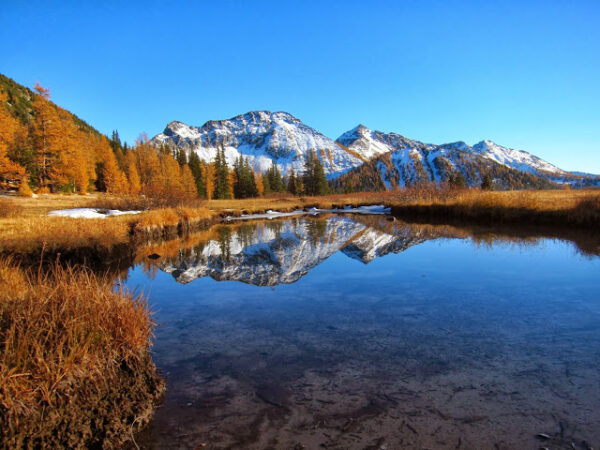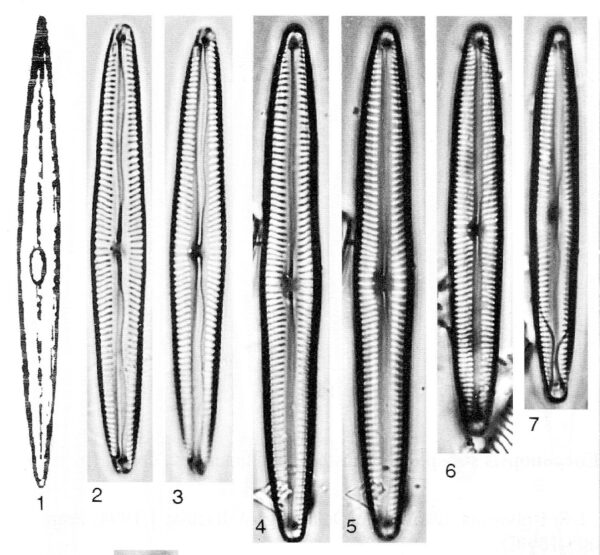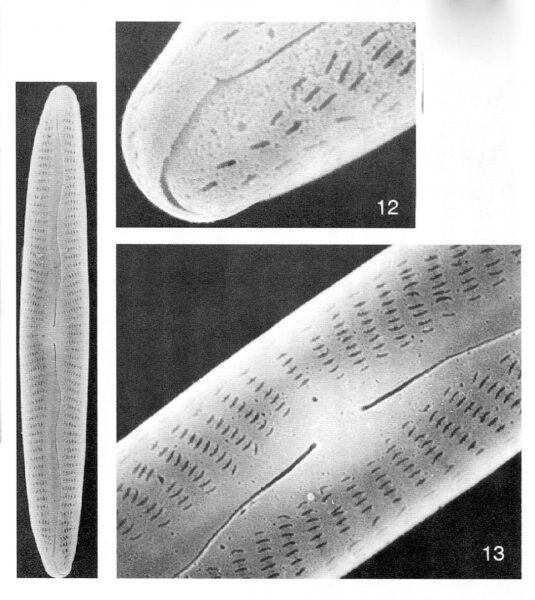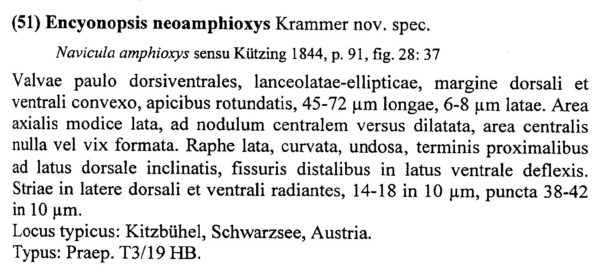Kurtkrammeria neoamphioxys
-
Category
-
Length Range41-59 µm
-
Width Range4.9-7.6 µm
-
Striae in 10 µm13-15 at the valve center, 15-18 at the ends on the dorsal side
-
SynonymsNavicula amphioxys Kütz. 1844, p. 91, fig. 28:37
Cymbella amphioxys (Kütz.) Cleve 1894, p. 164
Cymbella navicula var. amphioxys Grunow in Cleve and J.D.Möller 1879
-
Reported AsCymbella amphioxys (Krammer and Lange-Bertalot 1986, p. 328, fig. 135:11-13)
-
ContributorLoren Bahls - Jan 2014
-
ReviewerSarah Spaulding - Nov 2014
Identification
Description
Valves are linear-lanceolate and distinctly dorsiventral. The dorsal margin is more strongly arched than the ventral margin, which is sometimes almost flat and sometimes slightly tumid in the middle. The apices are subrostrate, only weakly protracted, and tipped ventrally. The axial area is narrow. The central area is small and rounded. A single stigma lies at the end of a short median stria on the dorsal side of the central area. The raphe is lateral. Proximal raphe ends are weakly expanded and tipped towards the dorsal side. Distal raphe ends are hooked towards the ventral side. Striae are radiate near the valve center and then become parallel and finally convergent at the apices. Areolae in the striae are very fine and difficult to resolve in LM.
Autecology
This taxon is uncommon but widely distributed in small lakes, ponds and fens in the northern Rocky Mountains and North Cascades. In one of these lakes, Johns Lake in Glacier National Park, Montana, pH measured 7.2 and specific conductance measured 30 µS/cm at the time of collection. In Drosera Fen on the Indian Meadows Research Natural Area in western Montana, pH measured 6.8 and specific conductance measured 19 µS/cm. Krammer (1997) reports that E. neoamphioxys has a nordic-alpine distribution and prefers oligotrophic waters.
-
Size Range, µm3
-
Motility
-
Attachment
-
Habitat
-
Colony
-
Waterbody
- Learn more about this
Citations & Links
Citations
-
Publication Link: 10.1127/nova_hedwigia/2015/0263
Links
-
Index Nominum Algarum
-
GenBank
-
North American Diatom Ecological DatabaseNADED ID: 203018
Updates
Dec 01, 2016 - Transfer from Encyonopsis to Kurtkrammeria
From January 2014 until December 2016, this taxon page appeared within the genus Encyonopsis. The page was updated to follow the transfer to Kurtkrammeria made by Bahls (2015). - S. Spaulding
Cite This Page
Bahls, L. (2014). Kurtkrammeria neoamphioxys. In Diatoms of North America. Retrieved November 21, 2024, from https://diatoms.org/species/kurtkrammeria_neoamphioxys
Responses
The 15 response plots show an environmental variable (x axis) against the relative abundance (y axis) of Kurtkrammeria neoamphioxys from all the stream reaches where it was present. Note that the relative abundance scale is the same on each plot. Explanation of each environmental variable and units are as follows:
ELEVATION = stream reach elevation (meters)
STRAHLER = distribution plot of the Strahler Stream Order
SLOPE = stream reach gradient (degrees)
W1_HALL = an index that is a measure of streamside (riparian) human activity that ranges from 0 - 10, with a value of 0 indicating of minimal disturbance to a value of 10 indicating severe disturbance.
PHSTVL = pH measured in a sealed syringe sample (pH units)
log_COND = log concentration of specific conductivity (µS/cm)
log_PTL = log concentration of total phosphorus (µg/L)
log_NO3 = log concentration of nitrate (µeq/L)
log_DOC = log concentration of dissolved organic carbon (mg/L)
log_SIO2 = log concentration of silicon (mg/L)
log_NA = log concentration of sodium (µeq/L)
log_HCO3 = log concentration of the bicarbonate ion (µeq/L)
EMBED = percent of the stream substrate that is embedded by sand and fine sediment
log_TURBIDITY = log of turbidity, a measure of cloudiness of water, in nephelometric turbidity units (NTU).
DISTOT = an index of total human disturbance in the watershed that ranges from 1 - 100, with a value of 0 indicating of minimal disturbance to a value of 100 indicating severe disturbance.
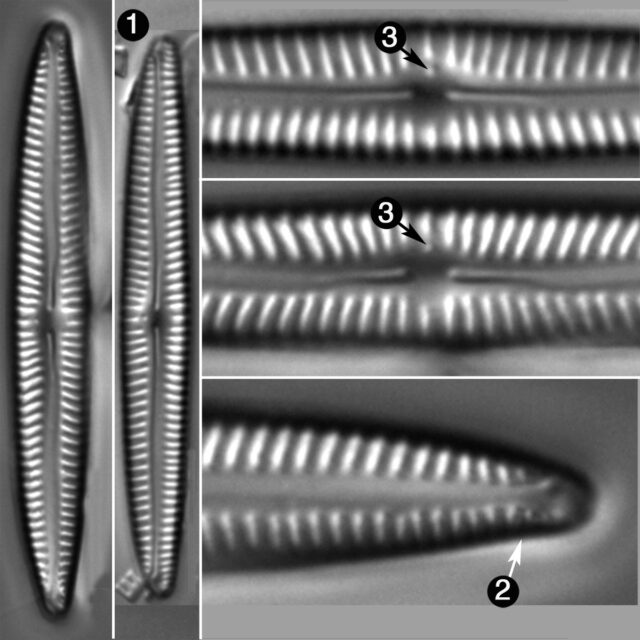
Kurtkrammeria neoamphioxys
- Valves distinctly dorsiventral
- Apices weakly protracted
- Isolated stigma present
Encyonopsis neoamphioxys has distinctly dorsiventral and linear-lanceolate valves with weakly protracted, subrostrate apices. An isolated stigma is present at the end of the short median stria on the dorsal side.
 Diatoms of North America
Diatoms of North America




